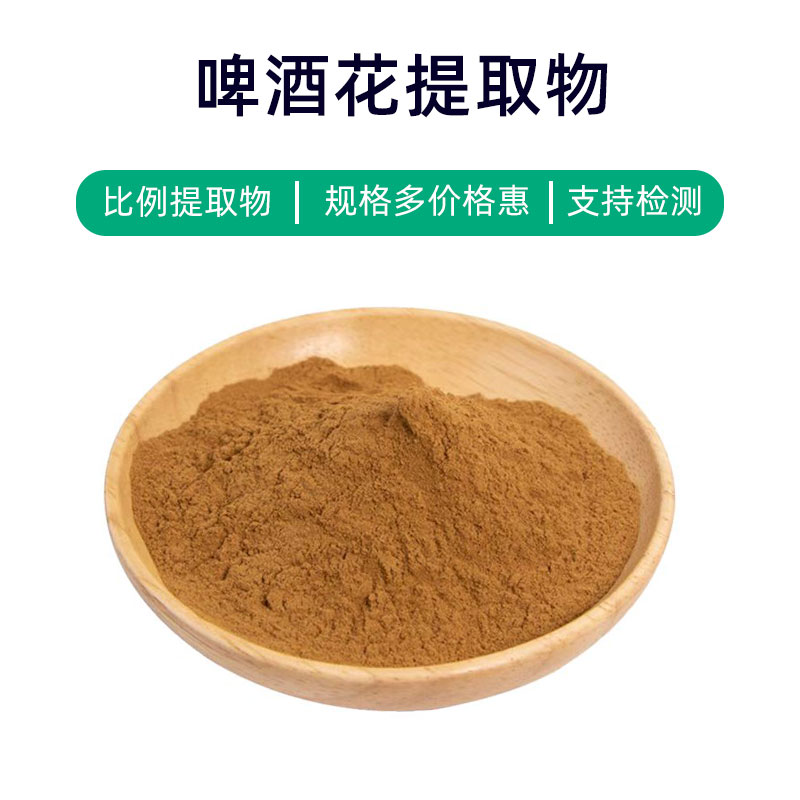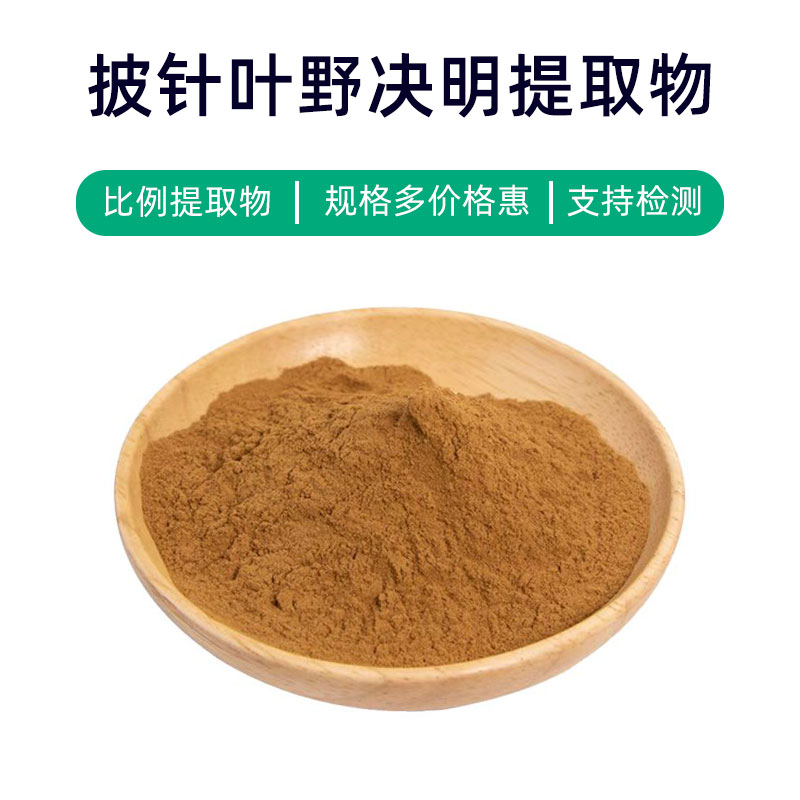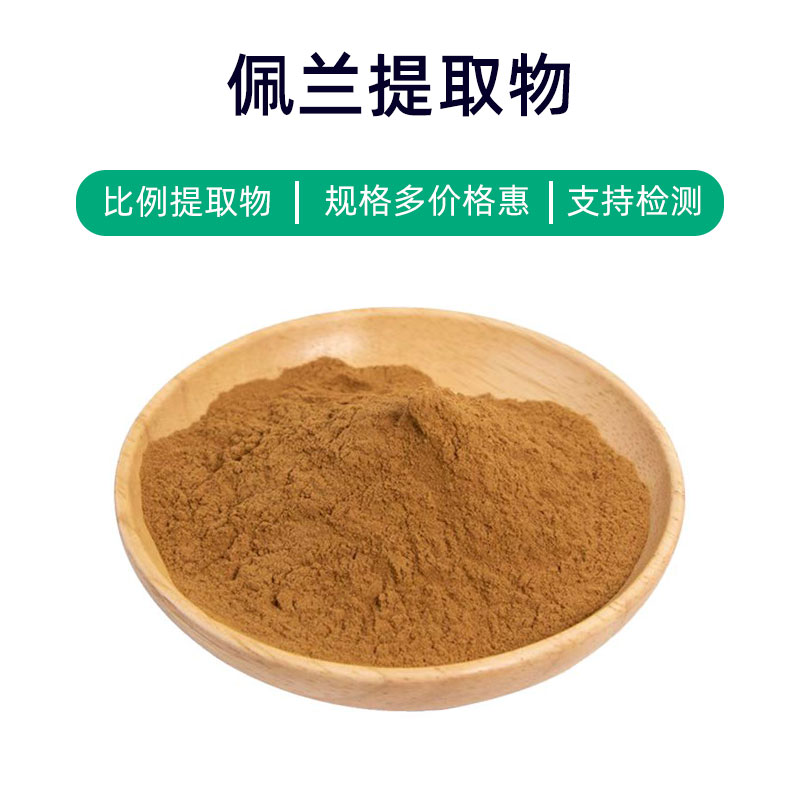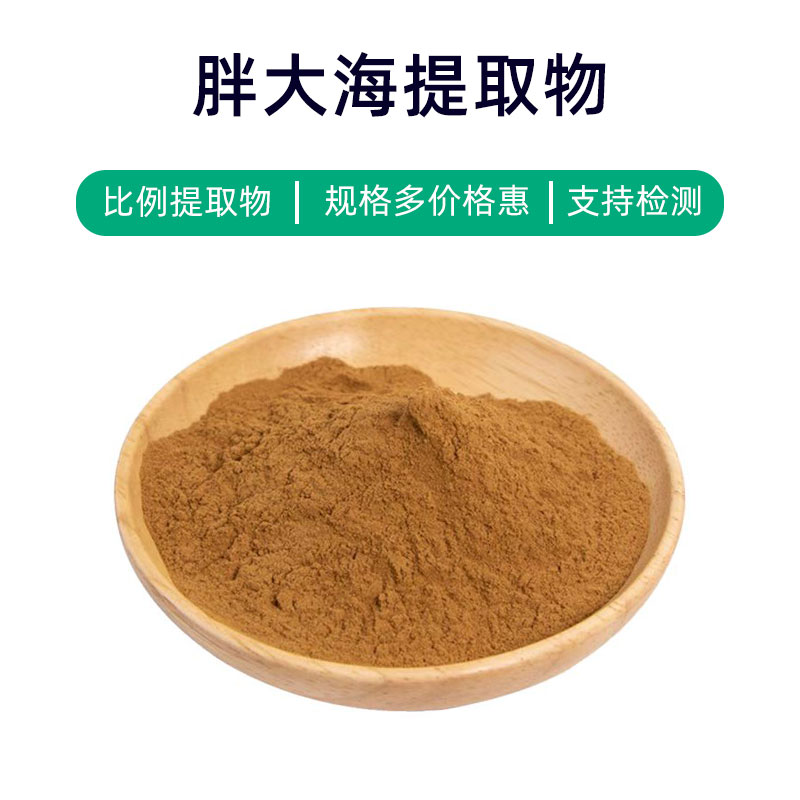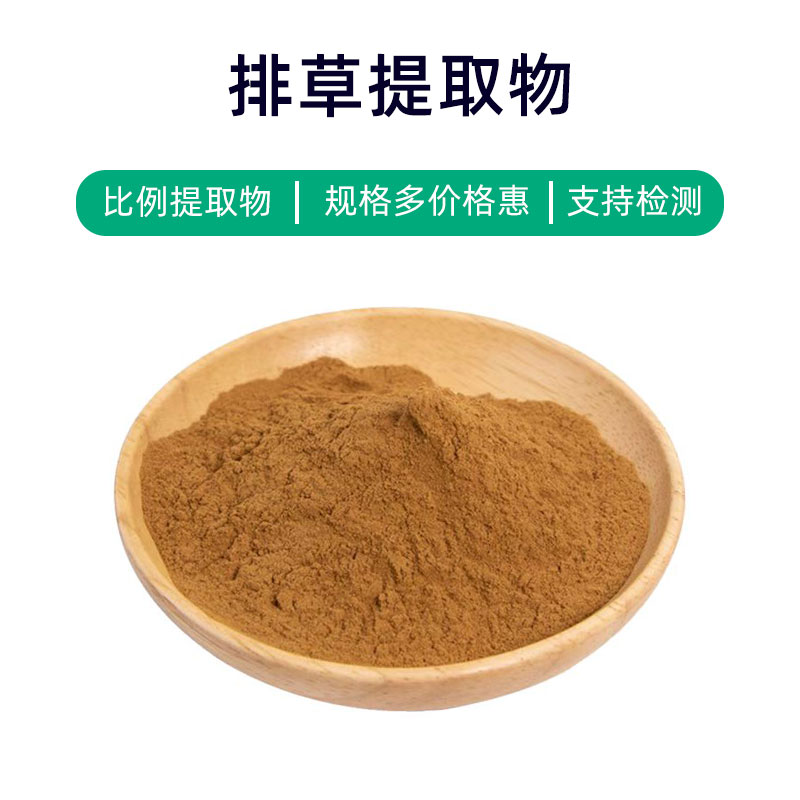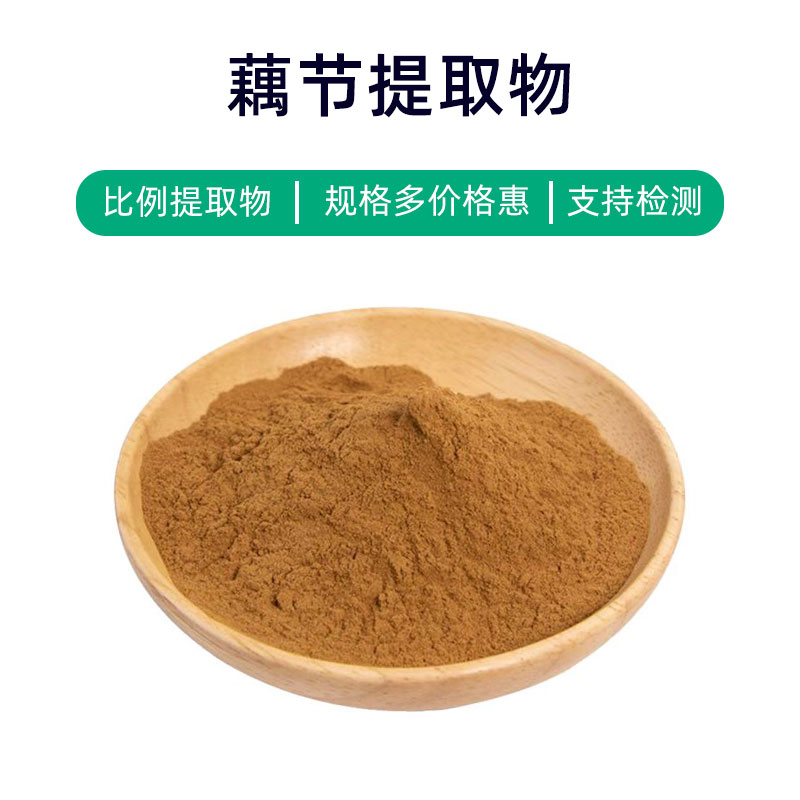Introduction to Knotweed Extract
Knotweed extract is a plant extract derived from the roots or underground tubers of the knotweed plant. It contains various active ingredients, including alcohols, phenolic compounds, and polysaccharides. Knotweed extract is widely used in the fields of medicine, health supplements, and food.
In the pharmaceutical field, knotweed extract is used as a traditional Chinese medicinal material and is considered to have certain medicinal value. It is reported to have anti-inflammatory, analgesic, and antioxidant effects, and may help relieve symptoms of rheumatoid arthritis and joint pain. Knotweed extract is also included in some topical ointments for treating skin diseases and inflammation.
In the health supplement sector, knotweed extract is often added to products aimed at boosting immunity and regulating the body's balance. It is believed to have antioxidant properties that help eliminate free radicals and reduce cellular oxidative damage.
In the food industry, knotweed extract is commonly used as a natural food additive, providing antimicrobial and preservative benefits. It can be incorporated into meat products, biscuits, beverages, and other foods to extend shelf life and enhance nutritional content.
Overall, knotweed extract has broad application prospects in medicine, health supplements, and food, though care should be taken to control dosage to avoid potential side effects.
Production Process of Knotweed Extract
The production process of knotweed extract typically involves the following steps:
- Raw Material Preparation: Select fresh, high-quality knotweed roots or tubers as extraction materials, wash thoroughly, and chop to increase extraction efficiency.
- Soaking: Place the chopped knotweed roots or tubers in an extraction tank, add an appropriate solvent (such as water, ethanol, etc.), and soak. Soaking time and temperature are controlled according to process requirements.
- Filtration: Filter the extract to remove solid particles and impurities, obtaining a clarified extract.
- Concentration: Concentrate the filtered extract, usually by vacuum concentration or evaporation, to remove the solvent and obtain a concentrated extract.
- Precipitation: Add a suitable precipitating agent to the concentrated extract, allowing organic materials and impurities to settle, resulting in a purer extract.
- Separation: Separate the precipitate from the solution, typically using a centrifuge or filter to obtain pure knotweed extract.
- Drying: Dry the obtained knotweed extract to remove residual moisture, yielding a powdered or granulated final product.
- Packaging: Package the dried extract using moisture-proof, sealed materials to ensure quality and stability.
- Quality Inspection: Conduct quality checks on the finished extract, including appearance, component content, microbiological indicators, etc., to ensure compliance with relevant standards and requirements.
- Storage: Store the inspected products in a dry, cool, and ventilated environment, avoiding direct sunlight and humidity to extend shelf life and stability.
Effects and Side Effects of Knotweed Extract
Knotweed extract, a natural plant extract derived from the knotweed plant, possesses various effects and benefits, primarily including the following aspects:
- Anti-inflammatory Effects: Knotweed extract contains rich active components with significant anti-inflammatory properties, effectively alleviating inflammation, pain, and swelling.
- Antibacterial and Anti-inflammatory: Knotweed extract exhibits inhibitory effects against various bacteria and fungi, making it useful for treating skin infections and inflammation with good anti-inflammatory effects.
- Antioxidant Properties: Knotweed extract is rich in various natural antioxidants, helping to eliminate free radicals, slow cellular aging, and protect cells from oxidative stress damage.
- Wound Healing Promotion: Knotweed extract stimulates skin regeneration and repair, accelerating the wound healing process and reducing scar formation.
- Anti-allergy Effects: Knotweed extract contains multiple bioactive components that can modulate immune system functions and alleviate allergic reactions and symptoms.
- Blood Sugar Regulation: Some studies indicate that knotweed extract can help regulate blood sugar levels, assisting in diabetes control.
- Liver Protection: Knotweed extract has protective effects on the liver, potentially reducing liver damage, promoting liver cell regeneration, and improving liver function.
- Anti-tumor Properties: Some research suggests that active components in knotweed extract possess anti-tumor effects, inhibiting the growth and spread of tumor cells, with certain therapeutic effects on specific cancers.
Knotweed extract is generally safe, but individual allergic reactions or adverse effects, such as skin itching and redness, may occur. It is advisable to conduct a skin sensitivity test before use and seek guidance from a healthcare professional. Pregnant women, nursing mothers, and children should use it as directed by a physician.
Applications and Dosage of Knotweed Extract
Knotweed extract has widespread applications in medicine, food, and cosmetics. Its usage and dosage vary based on specific application scenarios, detailed as follows:
- Applications in the Pharmaceutical Field:
- Uses: Knotweed extract is commonly used in pharmaceuticals to prepare medications for treating rheumatic pain, arthritis, skin inflammation, etc.
- Dosage: Typically made into topical patches, ointments, or solutions for external application to affected areas 1-3 times daily, depending on the condition.
- Applications in the Food Industry:
- Uses: Knotweed extract is often used as a food additive for flavoring and enhancing aroma, and can also be made into health foods.
- Dosage: Added to food according to manufacturing processes, generally not exceeding 5 grams per 100 grams of food.
- Applications in the Cosmetics Field:
- Uses: Knotweed extract is commonly found in skincare products and shampoos, providing cleansing, antibacterial, and anti-inflammatory benefits.
- Dosage: Added according to specific product formulations, generally recommended for use as per product instructions, can be applied moderately to skin or hair, massaging gently until absorbed.
In general, knotweed extract is primarily used externally in the pharmaceutical field with lower dosages; in food, it serves mainly as an additive and must meet food safety standards; in cosmetics, it is intended for skincare and cleansing with moderate usage. During usage, it is essential to follow product instructions and recommendations from healthcare professionals to avoid overuse or misuse and minimize adverse effects.
Introduction to the Source Plant of Knotweed Extract: Distribution and Growth Environment
Knotweed (scientific name: Polygonum cuspidatum), also known as Japanese knotweed, is a common perennial herbaceous plant belonging to the Polygonaceae family. Below is a detailed introduction to the source plant of knotweed extract, including its distribution and growth environment.
- Plant Description:
- Knotweed is a herbaceous plant that grows by streams, in mountains, or at forest edges, with erect stems that can exceed 2 meters in height, featuring jointed nodes.
- The leaves are heart-shaped or triangular-ovate, pointed at the tips, with long petioles and smooth surfaces, appearing in variations of green and red.
- The flowers are small and dense, arranged in clustered inflorescences, typically pale yellow or white, flowering mainly in summer.
- The fruit is a three-angled nut, dark brown when ripe, with oval-shaped, smooth seeds.
- Distribution:
- Knotweed is native to China and is widely distributed, primarily growing in Northeast, North China, Northwest regions, and the middle and lower reaches of the Yangtze River, as well as in North Korea and Japan.
- In East Asia, knotweed is commonly found in mountainous areas, riverbanks, along roadsides, fields, and forest edges, demonstrating strong adaptability and a wide range of growth conditions.
- Growth Environment:
- Knotweed thrives in warm, moist environments, growing in well-drained soils with abundant sunlight, and is not particularly demanding on soil conditions.
- It is often found in mountainous regions, at the foot of hills, near rivers and streams, and open areas like forest edges and along roads.
- It is cold-resistant but sensitive to severe frost damage; therefore, in colder regions, insulation or other protective measures are generally required.
In summary, knotweed is a common perennial herbaceous plant predominantly distributed in East Asia, preferring warm, humid growth environments and thriving under a broad range of growth conditions. Its stems, leaves, flowers, and roots can all yield active components, offering significant medicinal and practical value.
Processing and Storage of Knotweed Extract
The processing of knotweed extract mainly includes the following steps: First, collect fresh knotweed plants and wash them to remove dirt and impurities. Then, grind or chop the cleaned knotweed to increase extraction efficiency. Next, employ appropriate extraction methods such as water extraction, alcohol extraction, or supercritical fluid extraction to obtain effective components from the knotweed. Finally, through filtration, concentration, and drying processes, a pure knotweed extract is obtained.
In terms of storage, knotweed extract should be kept in a dry, cool, and ventilated place, away from direct sunlight and high temperatures to prevent moisture absorption, mold growth, or oxidation. Additionally, avoid contact with harmful substances to maintain its purity and stability. Under proper storage conditions, knotweed extract typically retains a longer shelf life.
Monica Sun is a seasoned expert in the plant extraction industry with over a decade of experience in research and production. She specializes in the extraction and purification of plant active ingredients, focusing on driving innovation in natural product applications. Monica has participated in the development of multiple functional plant extracts, delivering high-value natural raw material solutions for the health food, pharmaceutical, and dietary supplement sectors.









